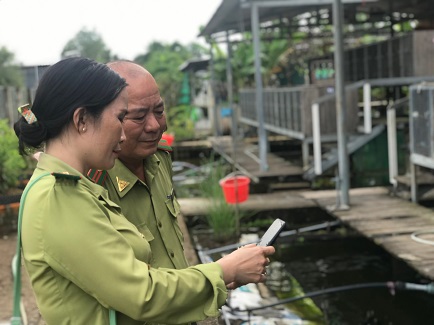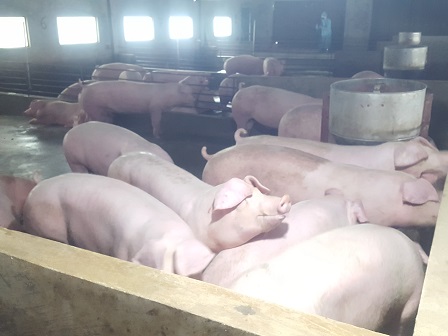At a glance
Viet Nam is a remarkable development success story. Since 1986, economic reforms have transformed the country from one of the world’s poorest to a lower middle-income nation. Rapid growth has lifted over 45 million people out of poverty between 2002 and 2018, reducing poverty rates from 70% to less than 6%. The robust economy continues to grow, driven by strong foreign direct investment and a vibrant, dynamic workforce. Agriculture plays a significant role in Viet Nam’s economic development.
FAO started working in Viet Nam in 1978. Since then, FAO Viet Nam has emerged as a trusted partner for sustainable development to build on more than 40 years of cooperation and achievements. So far, more than 400 projects have been implemented to generate significant advancements in the areas of sustainable agricultural development, food security and nutrition, forestry, fisheries and prevention of animal diseases that threaten global public health. The new Country Programming Framework (CPF) for 2022-2026, developed by FAO, together with multiple stakeholders in the country and in close consultation with the Ministry of Agriculture and Rural Development (MARD).
In 2004, Viet Nam poultry and human were heavily impacted by the highly pathogenic avian influenza (HPAI) H5N1 outbreaks, causing more than 60 human deaths and $45 million dollars of economic loss from dead poultries at its peak moment. In order to respond to this emergency, FAO’s Emergency Centre for Transboundary Animal Diseases (ECTAD) program joined the FAO Viet Nam country office in 2006. After surviving the crisis surrounding the emergence of highly pathogenic avian influenza (H5N1), the need for a fundamentally sustainable approach to fight against not only avian influenza, but also other livestock and zoonotic transboundary diseases has emerged.
FAO ECTAD Viet Nam receives financial supports from various organizations such as the United States Agency of International Development (USAID), Australian Department of Foreign Affairs and Trade (DFAT), Republic of Korea (ROK), United States Defense Threat Reduction Agency (DTRA), The European Commission (EC), The United Kingdom (UK) Fleming Fund and UN joint funds. With these supports, FAO ECTAD partners with the government of Viet Nam to reduce pandemic risk while preserving health, nutrition, livelihood, and productivity.
Highlights

FAO and UK to tackle AMR in Viet Nam
A new Farmer Field School model in Thai Nguyen is transforming how poultry farmers manage animal health—reducing antimicrobial use while boosting productivity. Backed by the UK’s Fleming Fund and led by FAO, the initiative marks a powerful step in Viet Nam’s fight against antimicrobial resistance through grassroots action and One Health collaboration.

Replication of captive wildlife management software
A National database on captive wildlife management software (CWFM) has been developed and rolled out through 18 training courses for 455 VNFOREST staff in 2020 and 2021. FAO will hand over the national database of captive wildlife facilities to the Viet Nam Forestry of Administration in 2023, and continue to support its application across the country

Biosecurity model successfully developed in the North of Viet Nam
FAO, in collaboration with the Department of Livestock Production (DLP), developed 8 biosecurity model small-scale pig farms in the northern high-pig-population provinces of Bac Giang and Nam Dinh.
Results snapshots from 2014 to 2024
Publications, reports, manuscripts published
Biosecurity handbooks published
Average people trained every year
Exercises to test P&R plans or AARs conducted
Strategies developed
Implementation tools developed
Information resources developed
Risk mitigation approaches
Sustainable Development Goals contributions










Key facts
- Agriculture, forestry and fishery sectors contribute 6.09% to the overall economic growth.
- Viet Nam is currently facing increasing threats from the risks of Transboundary Animal Diseases (TADs) and zoonoses.
- Viet Nam was the first country in the Western Pacific Region to develop a national action plan to combat AMR.
- About 2.9 million individuals are involved in wildlife farming (7,500 wildlife farms and 250 wildlife species being farmed).
- 26.9% of the labor force are employed in agriculture.
- More than 60 human deaths and $45 million dollars of economic loss was caused by the 2004 HPAI H5N1 outbreaks.
- More than 70 zoonoses have been detected in Viet Nam in last 10 years.
Our partners
- Ministry of Agriculture and Rural Development
- One Health Partnership for Zoonoses and AMR
- Livestock associations (European Chamber of Commerce in Viet Nam, VIPA, VFAEA, etc.)
- Development partners (ILRI, CIRAD, OUCRU, FHI360, etc.)
- Bilateral missions i.e. Danish embassy, British embassy, etc.
- UN agencies (WHO, IOM, UNODC, UNEP, UNDP etc.)
Related links
- FAO Global
- ECTAD Asia Pacific
- FAO Viet Nam
- Animal health and production
- 5000 days of combatting Avian Influenza in Viet Nam


